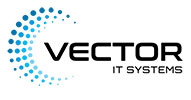Online Marketing for Small and Medium Enterprises
Advertising your business effectively is crucial for gaining visibility, attracting customers, and driving sales. To achieve this, it’s essential to define your target audience, set clear goals, and develop a compelling message that showcases the unique value of your products or services. Choosing the right advertising channels, both online and offline, enables you to reach your target audience effectively. Creating engaging and high-quality content, utilizing targeted advertising options, and monitoring campaign results allow you to optimize your strategies for maximum impact. By building a consistent brand presence and encouraging positive word-of-mouth, you can establish a strong and successful advertising campaign that helps your business thrive.
How to get started:
1. Define your target audience:
Identify the specific group of people who are most likely to be interested in your products or services. Consider factors such as demographics, interests, and buying behaviours. This will help you tailor your advertising efforts to reach the right audience.
2. Set clear goals:
Determine what you want to achieve through your advertising campaign. Whether it’s increasing brand awareness, driving website traffic, generating leads, or boosting sales, having clear goals will guide your advertising strategy and allow you to measure success.
3. Develop a compelling message:
Craft a clear and persuasive message that effectively communicates the value and benefits of your products or services. Focus on what sets you apart from competitors and why customers should choose you. Keep your message simple, concise, and memorable.
4. Choose the right advertising channels:
Research and select the advertising channels that are most effective in reaching your target audience. Consider online platforms such as social media advertising, search engine marketing, display ads, and email marketing. Traditional channels like print, radio, and television may also be relevant depending on your audience and budget.
5. Utilize targeted advertising:
Take advantage of targeting options available on various advertising platforms. This allows you to narrow down your audience based on specific criteria, such as demographics, interests, location, and online behaviours. Targeted advertising ensures your message reaches the right people and maximizes your return on investment.
6. Create engaging content:
Develop high-quality, visually appealing content that captures attention and resonates with your audience. This could include images, videos, infographics, or interactive elements. Focus on providing value, solving problems, or entertaining your target audience to build engagement and interest.
7. Monitor and analyse results:
Regularly track the performance of your advertising campaigns to evaluate their effectiveness. Use analytics tools to measure key metrics such as reach, impressions, click-through rates, conversions, and return on investment. This data will help you identify what’s working and what needs improvement.
8. Adapt and optimize:
Based on the insights gathered from your campaign analytics, make necessary adjustments and optimizations to improve your advertising strategy. Test different messages, visuals, platforms, and targeting options to find the most effective combination for your business.
9. Consider word-of-mouth marketing:
Encourage satisfied customers to share their positive experiences and recommend your business to others. Word-of-mouth marketing can be highly effective and cost-efficient. Provide exceptional customer service, offer incentives for referrals, and actively engage with your customers to foster positive word-of-mouth.
10. Build a consistent brand presence:
Establish a consistent and recognizable brand identity across all your advertising channels. Use consistent messaging, visual elements, and tone of voice to reinforce your brand image. Consistency helps build trust, recognition, and loyalty among your target audience.
STAY IN THE LOOP






